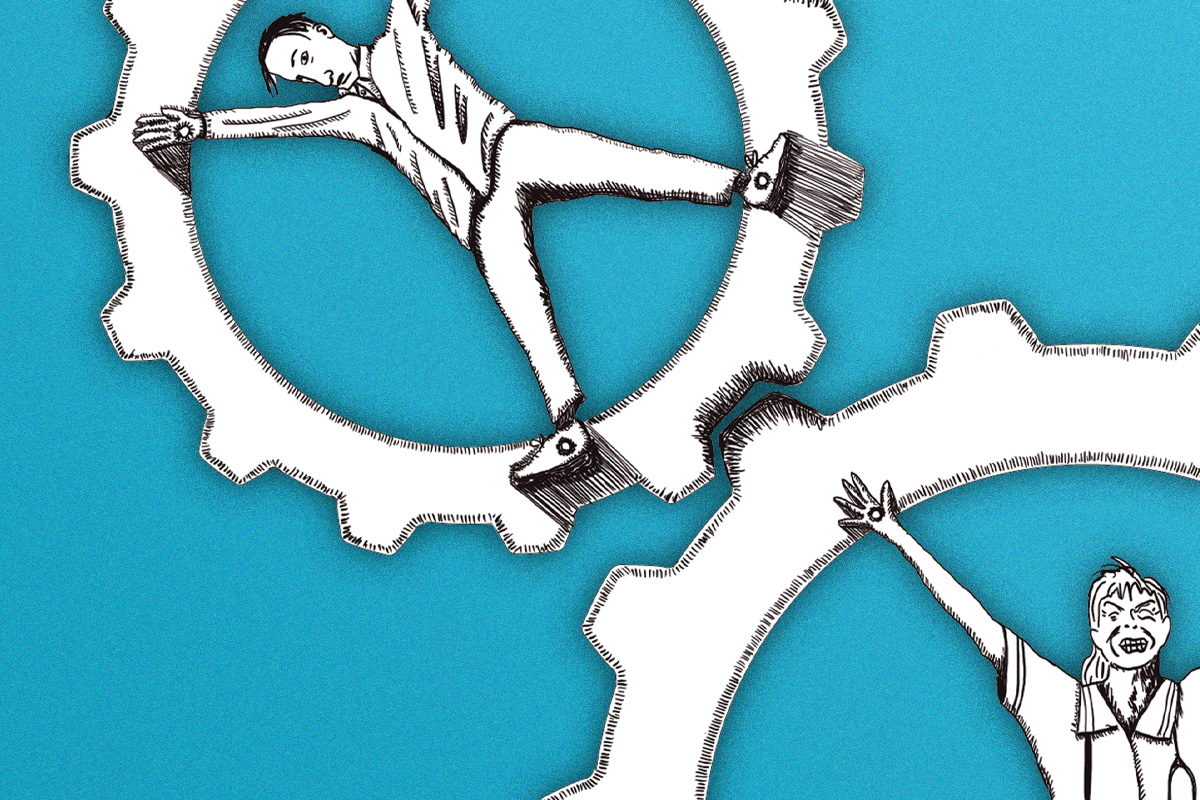Behind the gloss of various superficial measures introduced by George Osborne in his 2014 Autumn Statement on Wednesday 3rd December lay a far grimmer message for the vast majority of ordinary people. The real story of Osborne’s statement is the warning of what lies ahead after the next election: years more of austerity and deep, savage cuts.
Behind the gloss of various superficial measures introduced by George Osborne in his 2014 Autumn Statement on Wednesday 3rd December lay a far grimmer message for the vast majority of ordinary people. For all the Chancellor’s talk about stamp duty, tax avoidance, and fuel duty, the real story of Osborne’s statement is the warning of what lies ahead after the next election: years more of austerity and deep, savage cuts.
The big picture
Many commentators noted that a few popular measures – to tax the banks and reduce tax avoidance by multinationals – were thrown in by the Tory Chancellor to try and soften the blow in the run up to the general election next May, with Nick Robinson of the BBC claiming that, “Some Conservative cheerleaders are already hailing a Robin Hood package.”
The true colours of the Tory-led Coalition, however, were revealed by the figures surrounding the general state of the economy – and, more importantly, by the harsh measures that the Osborne and co. promise in order to tackle the stubbornly-high public debts and deficit. As Robinson commented, “Against the big economic picture revealed in the latest official forecasts all of these announcements [by Osborne] were largely irrelevant.”
The original plan of the Conservatives in 2010 was for the government’s structural deficit to be eliminated, and for the national debt (as a percentage of GDP) to be falling, within one parliamentary term – that is, by May 2015. With this date looming on the horizon, it is clear that Osborne’s plans have not survived contact with the enemy: the ongoing global crisis of capitalism. The deficit is a long way from being eliminated; indeed, at 5% of GDP is higher than economies such as France and Italy, which are widely considered to be broken. Britain’s public debt, meanwhile, is now predicted to continue rising beyond the next general election.
In short, the Con-Dem Coalition’s bad medicine of austerity is having no effect on the disease that the Tory doctors claimed they would cure. The patient is still sick – some say chronically. And this despite the so-called “recovery” that Osborne and Cameron have boasted about for the past year.
Economy on a knife-edge
The reality is that this “recovery” has been anything but for the vast majority of people. Real wages remain stagnant at best. For all the talk of unemployment figures going down, when one looks past the veneer of the statistics, the reality seen is a qualitative change in the economy – a long-term shift towards growth based on zero-hour contracts, low pay, precarious jobs, and self-employment.
“What is striking,” comments Robert Peston of the BBC, “is that the OBR [Office for Budget Responsibility] seems to see this shift to lower wages and taxes as, to an extent, reflecting a change in the structure of the economy, rather than a passing phenomenon.”
The reduction in unemployment, therefore, is merely the other side of the coin to this new reliance on cheap labour, with big business taking advantage of low wages to keep workers on. This, in turn, means a lack of investment in machinery and technology, and a resultant decline in productivity growth. At the same time, firms that should have died long ago have been kept alive by a drip feed of cheap money and low interest rates, leading to the spread of “zombie capitalism” – of undead businesses that stalk the land, acting as a drag on productivity, future investment, and genuine growth.
The British economy, then, is in just as precarious state as before, reliant on credit-fuelled consumption, quantitative easing, and an ever-expanding housing bubble. Despite Osborne’s promise of a “march of the makers”, manufacturing in Britain is down 4% from 2008 levels and growth, as Paul Mason, economics editor for Channel 4, notes, is based “on the long-term life support machine of free money from Mark Carney”; “growth in the service sector, fuelled by bank credit and rising house prices and interest rate cuts…the same lopsided growth we’ve always had.”
“The Office for Budget Responsibility, the UK’s independent fiscal watchdog, expects nothing like the sort of lively economic rebound that normally follows an economic slump, but rather a sluggish advance towards recovery.” So states the Financial Times, commenting on Osborne’s recent Autumn Statement.
“The economy is not only far less productive, but stubbornly unbalanced. Trade continues to disappoint; British exports are expanding more slowly than the world markets into which they sell. Reformed stamp duty will pep up an already buoyant housing market, where prices are expected to outpace wages into the future. For all his [Osborne’s] worthy measures for boosting science and productivity, the economy remains as reliant on household spending and debt as ever.”
Profits up; taxes down
The national income may be increasing; but this is not happening in a uniform manner. Instead, wages have flat-lined, whilst vast profits have accumulated in the hands of a tiny – but very wealthy – elite. Despite Osborne’s so-called “Robin Hood” measures, therefore, it is clear that we are not all in this together.
The result of such a low-wage-based economy, as Peston notes above, is that the government is taking in far less from income taxes that before and the deficit remains far above the Chancellor’s hoped-for levels, despite years of slashing away at public spending already.
Furthermore, Cameron himself has recently talked of “red warning lights flashing” on the dashboard of the global economy. There is instability at every level, with economic stagnation and crisis in Europe and Japan, alongside geo-political turmoil in the Middle East and Ukraine. Any number of factors could throw the economy in Britain backwards, whilst global crisis and competition mean a race to the bottom, with big business demanding further attacks on pay in order to make UK-based firms more “competitive”. Things, clearly, are only going to get worse and the austerity required will only intensify.
The Tories, however, continue to promise to eliminate the deficit – now by the 2019-20 fiscal year. At the same time, we are told that such deficit reduction will continue under the Conservatives in a similar vein as before – that is, through cuts rather than taxes. With spending on education and healthcare “ring-fenced”, as the Economist points out, “that would suggest a looming massacre of the unprotected budgets for welfare, local government and defence”. The result, according to Bloomberg economist Jamie Murray, would mean a 60% cut to non-ring-fenced budgets in total over the 2010-2020 period.
The OBR, meanwhile, estimates that only 40% of the “necessary” cuts to government spending have occurred thus far. In other words, we are well under halfway through the viscous austerity programme demanded by the senile capitalist system.
Blood from a stone
Osborne and Cameron have recently remarked about the lack of resistance the Coalition has thus-far faced in opposition to the cuts. But with the low-hanging fruit already plucked, the cuts to come will have to be far more deep and far more savage – threatening to tear apart at the very fabric of society.
Indeed, neither the Tories nor Labour – understanding the severity of what is needed in terms of future austerity – have outlined exactly where or how they plan to cut, fearful as they are of the consequences of honestly telling the truth to workers and youth. “Neither side,” Paul Mason states, “can bring themselves to explain…where the pain will happen.”
But one cannot draw blood from a stone. The attacks required by capitalism on pay, jobs, welfare, pensions, and public services will not happen without a fight back. For every action, there is an equal and opposite reaction.
The dynamics of class struggle, however, are clearly not as mechanical as the famous aphorism about Newton’s laws of motion. Instead, consciousness develops dialectically. Anger, frustration, and discontent build up beneath the surface; the “mole of revolution” burrows away unseen and out-of-sight, before finally burst through in an explosive manner. The apparent lull is only the calm before a mighty storm.
A question of leadership
The desire for change is clearly there. The massive student movement of 2010-11; the riots in the summer of 2011; the swing towards the YES camp in recent referendum on Scottish independence: all of these express in a distorted, confused, and contradictory manner the deep malaise and questioning in society – a questioning mood that was not there before.
What is lacking is leadership. The so-called “leaders” of the trade unions are in fact lagging far behind, with no perspective or plan. Instead we see the farce of endless isolated one-day – or even four-hour – strikes, with strategy for how concretely to advance. At the same time, the TUC continues to backpedal on its call for a general strike, whilst on the political front, Balls and Miliband offer nothing more than a “Tory-lite” programme of austerity – of softer cuts carried out at a slower pace.
For all the talk of austerity and cuts by the Tories and the Labour leaders, the reality is that there is an unimaginably vast amount of wealth in society; the only problem is that it sits in the accounts of the bosses and the bankers, who refuse to invest because of the enormous excess capacity – i.e. overproduction – that exists in society on a world scale. The money for schools, hospitals, housing, transport, and decent pensions is clearly there; the problem is that, under capitalism, such wealth is not utilised for social need, but only for private profit.
What is needed is a leadership of the labour movement that is worthy of its name – a leadership that is willing to fight with a bold socialist programme for the revolutionary transformation of society. Only in this way can we put an end to austerity and provide a genuine alternative to the future that capitalism hold ahead of us – a future of horror without end.






